Abstract
Betz, John V. (St. Bonaventure University, St. Bonaventure, N.Y.), and Kenneth E. Anderson. Isolation and characterization of bacteriophages active on Clostridium sporogenes. J. Bacteriol. 87:408–415. 1964.—Twelve bacteriophages active on the anaerobic species Clostridium sporogenes were studied. Four of these were isolated by the authors, and eight were obtained from L. S. McClung of Indiana University. The 12 phages studied could be distinguished into three groups on the basis of their plaque morphology, host range, receptor sites, and serological relationships. One group contained ten of the phages which were serologically related. These were separated into three subgroups on the basis of plaque morphology, host range, and receptor sites. The heat sensitivities of four phages were correlated with their classification in this scheme. Of 25 strains of C. sporogenes tested for lysogenicity, none was found to be lysogenic, but 9 produced bacteriocin-like substances and 20 were sensitive to one or more of these.
Full text
PDF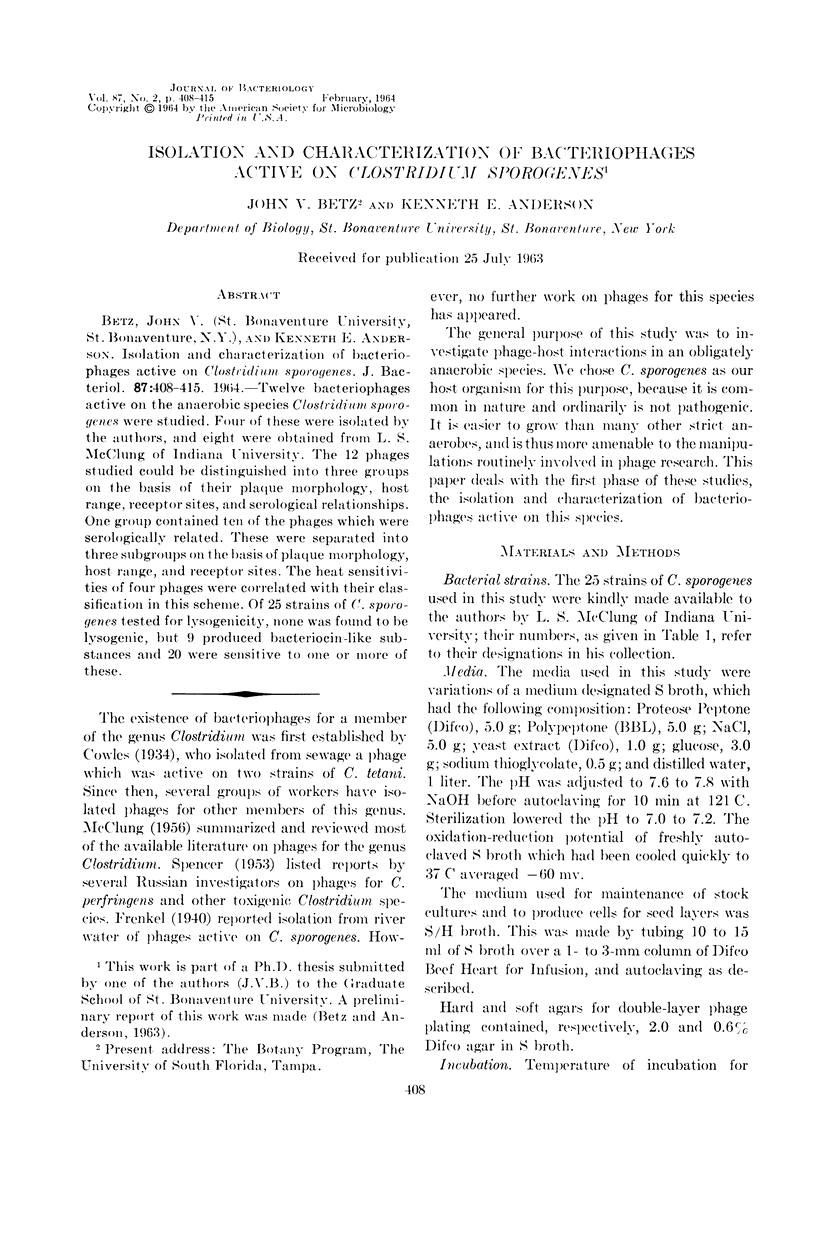
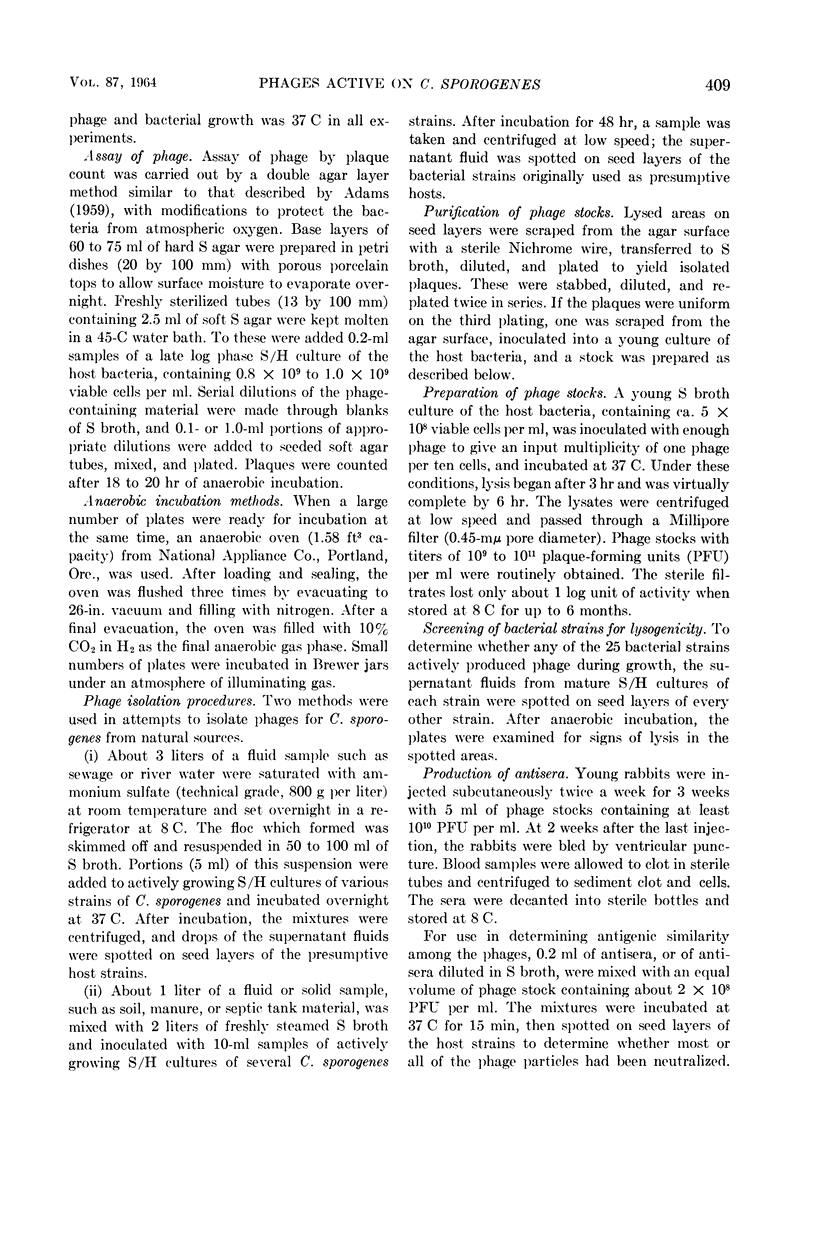
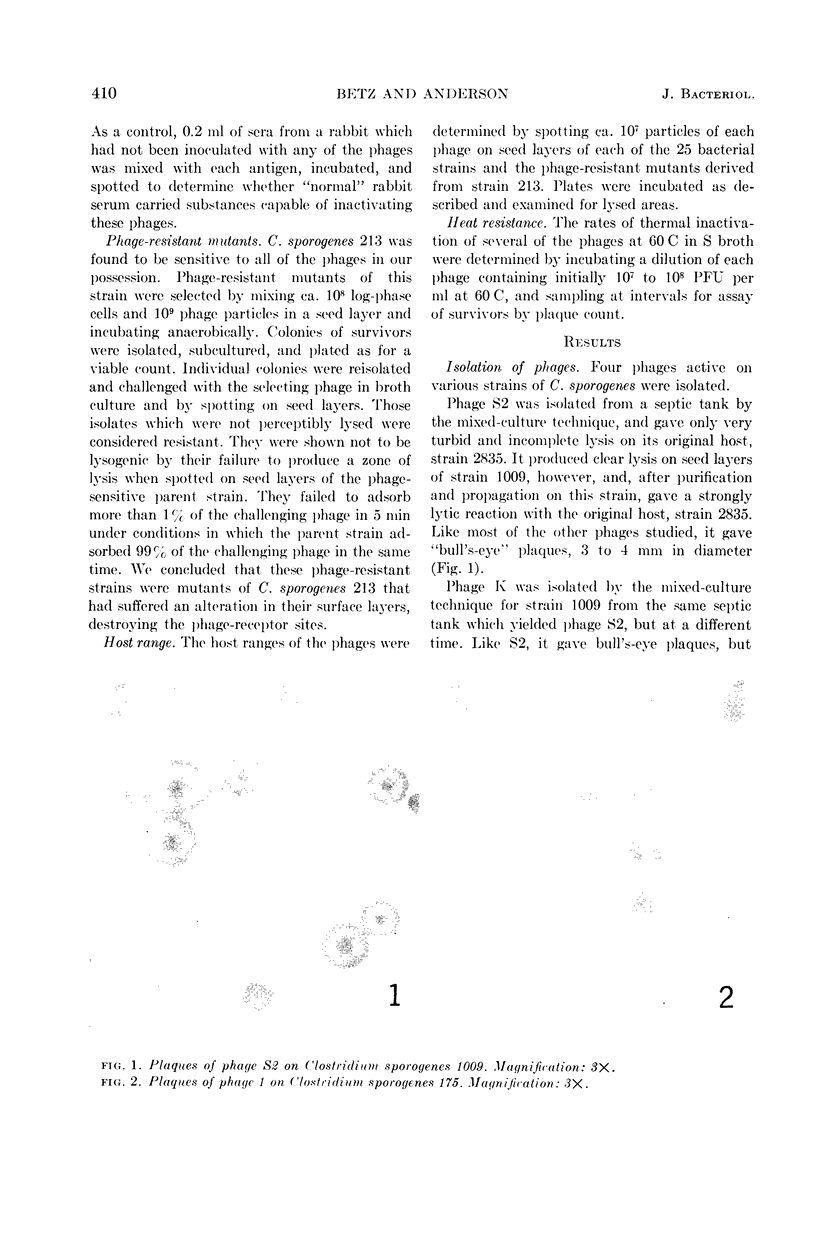
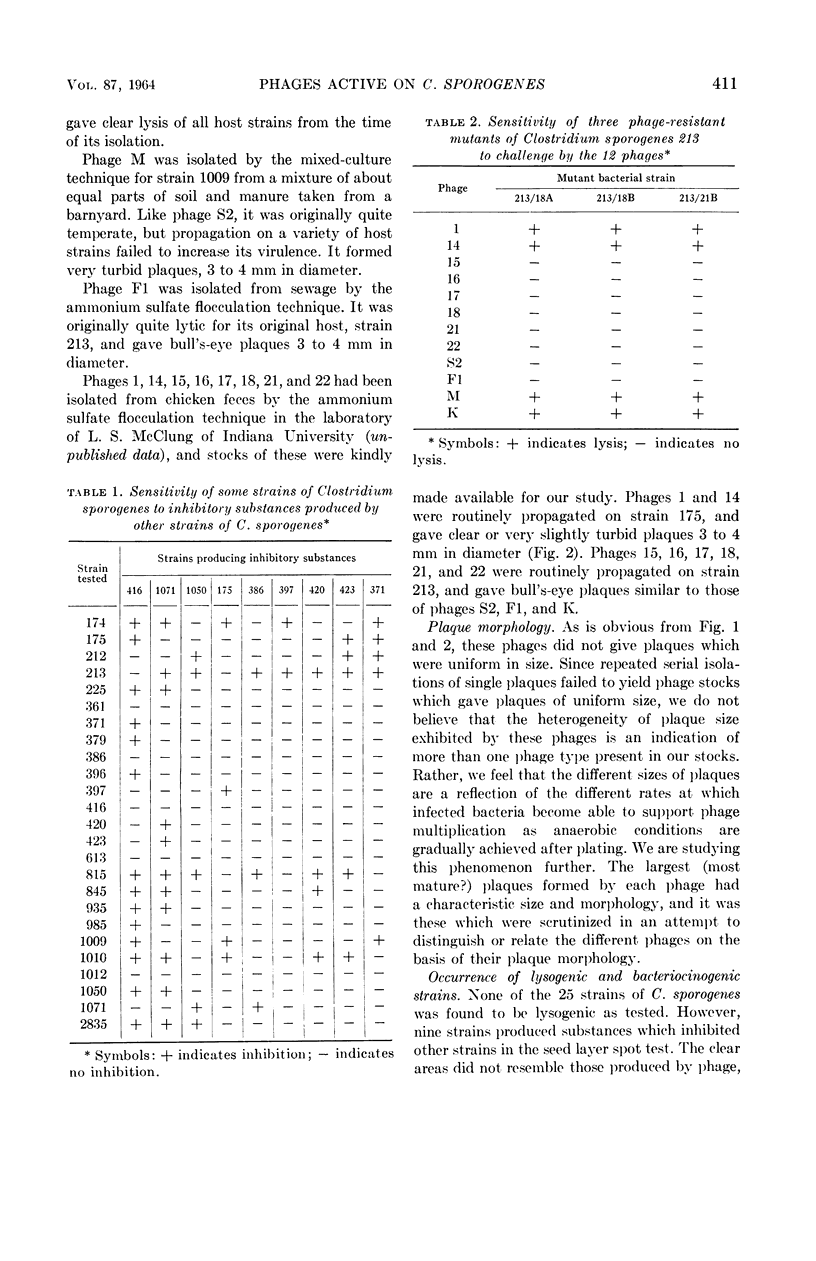
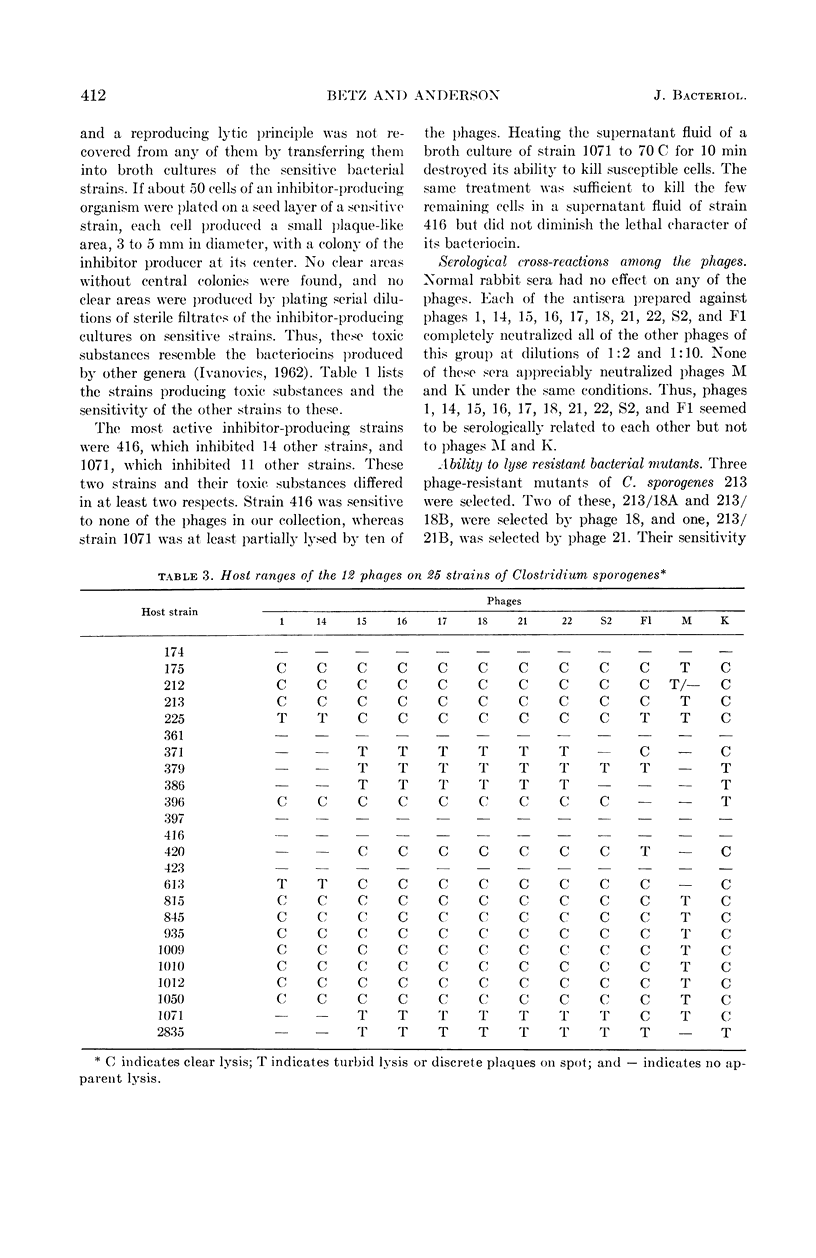
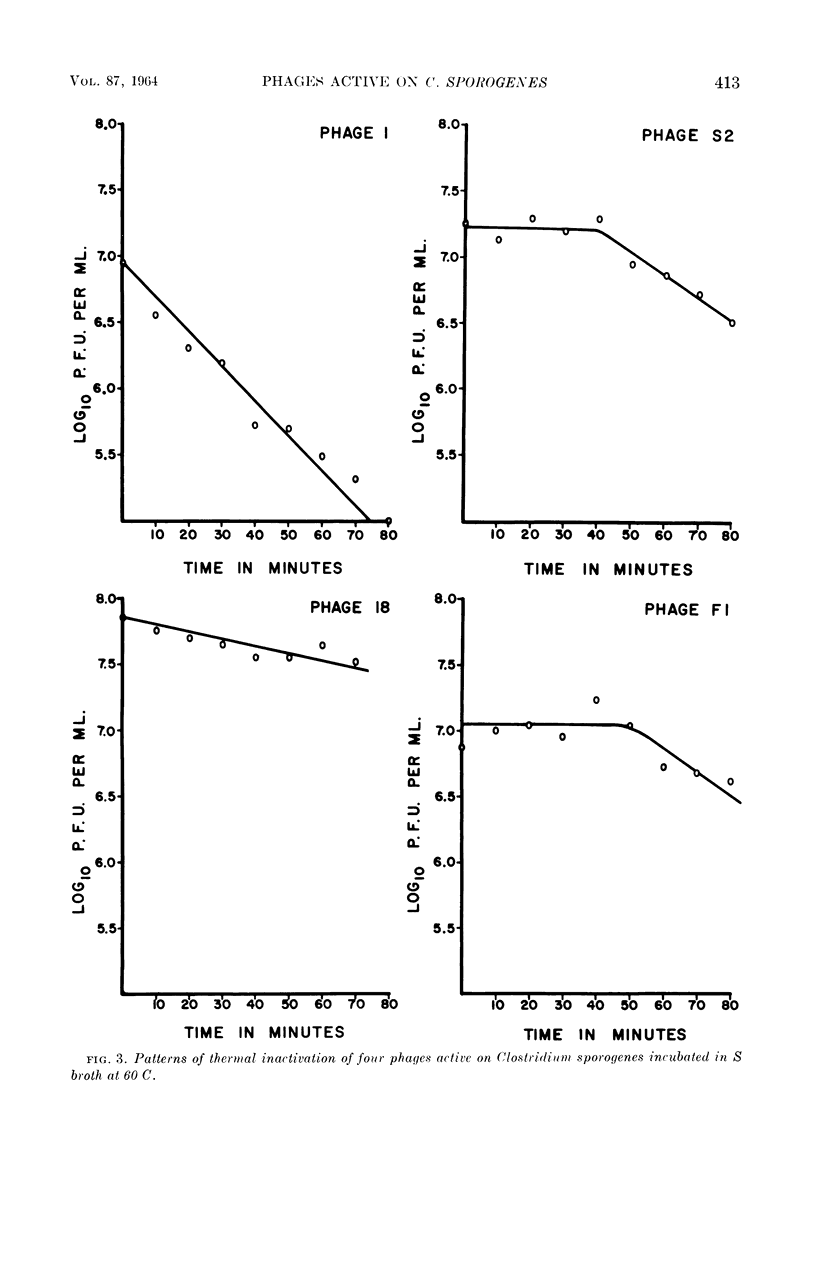
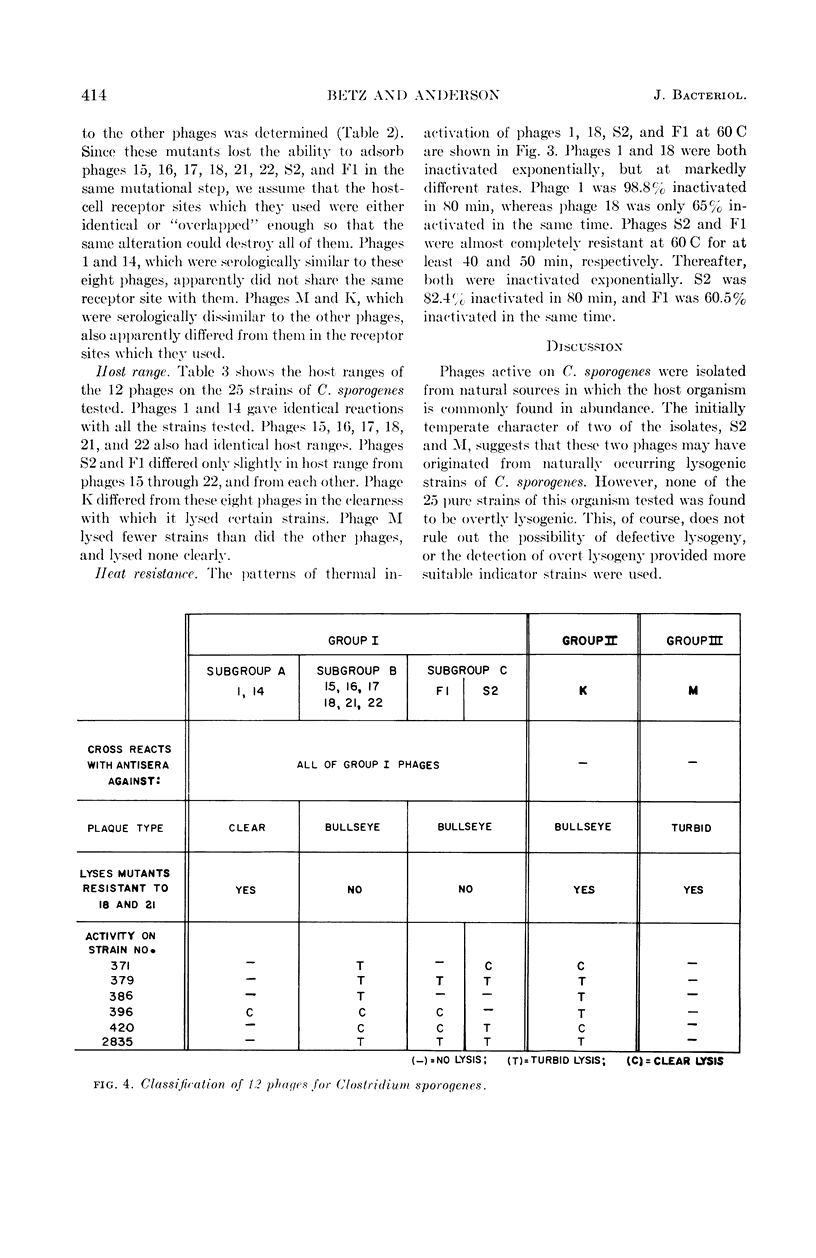
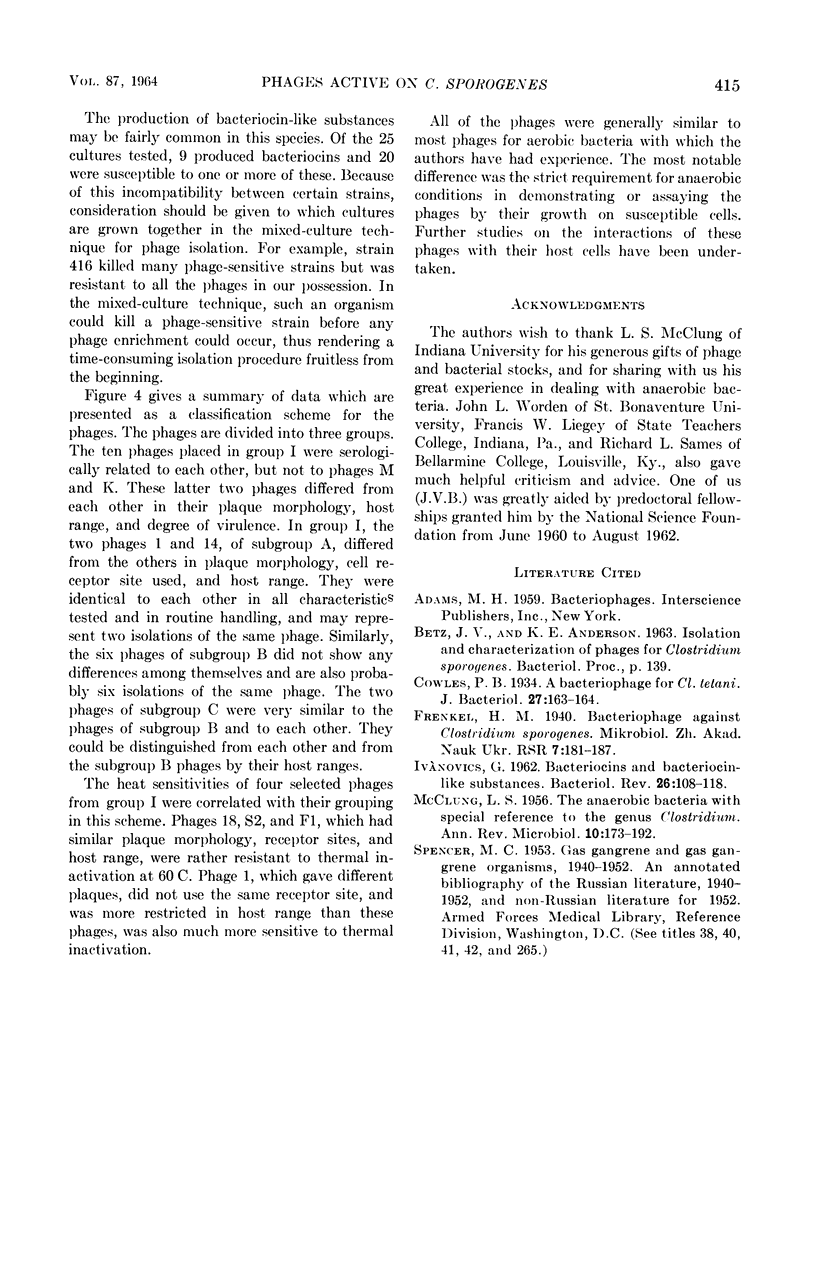
Images in this article
Selected References
These references are in PubMed. This may not be the complete list of references from this article.
- Cowles P. B. A Bacteriophage for Cl. tetani. J Bacteriol. 1934 Feb;27(2):163–164. doi: 10.1128/jb.27.2.163-164.1934. [DOI] [PMC free article] [PubMed] [Google Scholar]
- Ivanovics G. BACTERIOCINS AND BACTERIOCIN-LIKE SUBSTANCES. Bacteriol Rev. 1962 Jun;26(2 Pt 1):108–118. [PMC free article] [PubMed] [Google Scholar]
- MCCLUNG L. S. The anaerobic bacteria with special reference to the genus Clostridium. Annu Rev Microbiol. 1956;10:173–192. doi: 10.1146/annurev.mi.10.100156.001133. [DOI] [PubMed] [Google Scholar]



